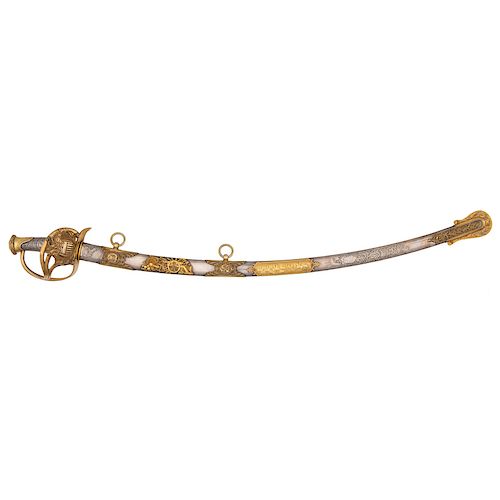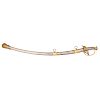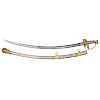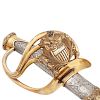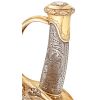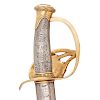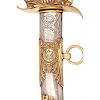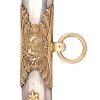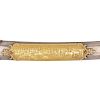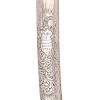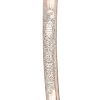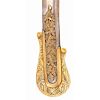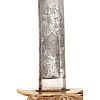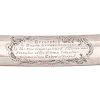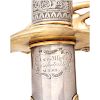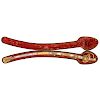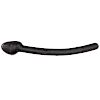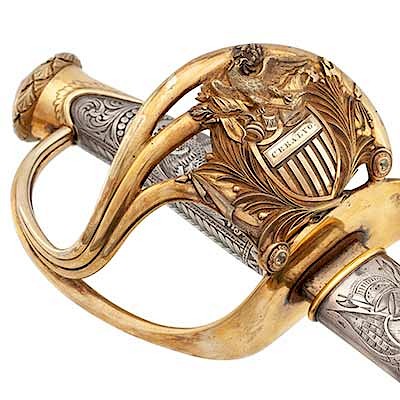Presentation Sword to Major Luther Giddings
About Seller
6270 Este Ave.
Cincinnati , OH 45232
United States
With offices in Cincinnati, Cleveland and Denver, Cowan’s holds over 40 auctions each year, with annual sales exceeding $16M. We reach buyers around the globe, and take pride in our reputation for integrity, customer service and great results. A full-service house, Cowan’s Auctions specializes in Am...Read more
Two ways to bid:
- Leave a max absentee bid and the platform will bid on your behalf up to your maximum bid during the live auction.
- Bid live during the auction and your bids will be submitted real-time to the auctioneer.
Bid Increments
| Price | Bid Increment |
|---|---|
| $0 | $25 |
| $500 | $50 |
| $1,000 | $100 |
| $2,000 | $250 |
| $5,000 | $500 |
| $10,000 | $1,000 |
| $20,000 | $2,500 |
| $50,000 | $5,000 |
| $100,000 | $10,000 |
About Auction
Oct 30, 2018
Cowan's is honored to present the Magnificent Sword Collection of William Koch in its two-day firearms, militaria, and American history auction, with a focus on the Civil War. Cowan's Auctions dawnie@cowans.com
- Lot Description
Presentation Sword to Major Luther Giddings
31.75" curved single-edged blade with 25.5" stopped central fuller. 5.5" brass hilt with three branch guard and knuckle bow that has a cast spread-winged eagle surmounting an American shield with the name of the battle CERALVO on it. The base of the basket where it connects to the guard is set with two yellow-green cushion cut stones measuring approximately 5mm that appear to be Chrysoberyl. Silver hilt delicately engraved with flowing foliate scrolls and a spread-winged eagle on the obverse and the Gothic initials LG on the reverse. Pommel cap set with a clear emerald cut quartz stone measuring approximately 18mm x 13mm. Blade with frosted etching over slightly more than half of its length, showing flowing foliate scrolls, panoplies of arms and martial themes. Obverse blade etched with the three-line legend Ames Mfg. Co / Cabotville / Mass. Presentation grade silver plated scabbard with gilt brass mounts and decorative applied plaques showing martial themes and panoplies of arms. Obverse scabbard throat engraved with panoplies of arms and Battle / of / Monterey / Mexico / Sept. 21, 22, 23 / 1846 . Reverse of throat engraved Ames Mfg. Co / Cabotville / MASS . Obverse of scabbard additionally engraved between the middle mount and drag with large flowing foliate scrolls, and American Eagle and Battle / of / CERALVO / MEXICO / March 7th / 1847 . Reverser of scabbard engraved between the upper and middle mount: Presented / to MAJOR LUTHER GIDDINGS / by the Non Commissioned Officers and / Privates of the 1st Ohio Volunteer / Regiment as a Token of Respect . Sword is contained in a black painted wooded case with a form-fit, salmon colored velvet lining and two brass closure clasps. This sword is published in The Ames Sword Company by John D. Hamilton on page 118.
Born May 29, 1823 in Cornwall, England, Luther Giddings immigrated with his father and brothers to the United States in 1829 and settled in the Baltimore area where his father, a civil engineer by trade, and older half-brother found employment with the expanding B & O Railroad. Young Luther graduated from St.John's College in Annapolis, Maryland in 1841 and then commenced the study of law in Charleston, Virginia as an apprentice under the esteemed Judge Andrew Hunter who would later prosecute the virulent abolitionist John Brown in 1859. In 1844 the hub of Giddings' life was to shift westward to frontier Dayton, Ohio where he joined his prosperous half-brother who had gone there a decade earlier as a contractor overseeing construction of St. Mary's Reservoir on the Miami Canal completed in 1845. Luther soon was admitted to the Ohio bar and began practicing law in the growing city. He also displayed interest in military matters by joining the local militia company and, as popularity was paramount, was ultimately elected captain of the Dayton Dragoons. Simmering tensions with Mexico along the disputed Rio Grande exploded in April 1846 when a patrol of American regulars were attacked and defeated by a superior force of Mexican Cavalry north of the river demarcation with 16 men killed. Initially, the country had been at odds politically - along sectional lines - over Polk's annexation of Texas in 1845. On May 15, 1846 Polk pressed Congress to declare war with Mexico with a lopsided vote in the Senate of 40-2 even though the President's justification was largely contrived in the interest of Manifest Destiny , for which he would later be formally censured. Sympathetic newspaper accounts of the brazen attack "on American soil" (that nuance was still being debated) gave tinder to a national uproar and quickly unified the country behind the (legally) unprecedented military undertaking that the President advocated. Congress followed suite and authorized a call for 50,000 volunteers while appropriating the unheard of sum of ten million dollars to pursue the salient aim of redressing the slight to the nation's honor. The Ohio quota was for 3,000 men or 30 companies for one year. The outpouring of patriotic recruits significantly outnumbered the quota, so much so that so priority was given to the state's standing militia companies. The Dayton Dragoons tried to enlist en mass but learned that the government's call did not include any cavalry. Captain Giddings' quickly reorganized 77 men as the Dayton Riflemen and with much fanfare the volunteers marched off to Camp Washington near Cincinnati on June 4, 1846. Here recruits and other companies from all over southern Ohio were organized as the 1st Regiment of Ohio Volunteer Infantry and mustered into United Sates service on June 23, 1846 under the command of Colonel Alexander M. Mitchell (see presentation sword elsewhere in catalog), formerly 4th United States Infantry. Armed and equipped but given only rudimentary training at Camp Washington, the regiment elected company officers and Captain Giddings' retained the captaincy. A short time later Giddings' was promoted to major to fill the vacancy created when Thomas L. Hamer, the popular and politically well respected former major, was appointed Brigadier General on July 1 to command a volunteer brigade. On the nation's birthday the Ohio regiments broke camp and with great martial reverie proceeded to board transports that would take them down the Mississippi River to New Orleans, the waypoint to Zachary Taylor's army stationed on the Rio Grande.
The 1st Ohio joined Taylor's regulars - recently victorious at Palto Alto and Resaca de Palma - on the river in the brutal heat of late July and did not have to wait long to see action. The influx of volunteers had given Taylor enough reinforcements - along with the superb American horse artillery - to start his planned advance on the strongly fortified citadel of Monterey about 120 miles distance over relatively barren, undulating terrain. The American army numbered just over 6,000 of all arms, half of them volunteers who would soon benefit immensely from the brief weeks of drill afforded by the regulars. Taylor moved south organized into three divisions comprising two of regulars and the volunteer division, each of two brigades. The 2nd Volunteer Division remained behind to guard the main depot at Camargo. The 1st Ohio and 1st Kentucky served together as the 1st Brigade of Major General William O. Butler's volunteer division. The Army of Occupation marched on September 11 reaching the town of Marin less than 25 miles from Monterrey on the 15th and went into camp for three days. On September 18 the advance resumed with the two regiments of Texas Mounted Rifles - called the Texas Division - scouting and leading the way. The Texan's reached the outskirts of Monterey during the morning of September 19 and quickly drew desultory Mexican artillery fire. The Monterey garrison, nearly all Mexican regulars along with the renegade San Patricios Battalion of disaffected Irish-American Catholics, was commanded by General de division Pedro de Ampudia. The Army of the North numbered over 7,300 men arrayed defensively in four infantry brigades and two cavalry brigades plus 30 pieces of artillery, concentrated in a series of fortifications and redoubts with ample supplies. Still, Ampedia had been ordered by Generalissimo Santa Anna to fall back to Saltillo and reform, but disobeyed. Ampudia chose to hold his ground believing that while he could not hope to outmaneuver the American army in the field, he might still beat Taylor outright if the Americans attacked his defenses - perhaps buoyed by some calculated political advantage to be gained by a victory that could end the war.
The American Army went into camp at nearby Bosque de San Domingo. Elite West Point engineers went forward to survey the terrain and defenses, reconnoitering Mexican positions while calculating distances for the artillery and gauging avenues of assault for the infantry. Ampudia held a small city with a commanding citadel and key strong points throughout, had more infantry and a force of cavalry to harass, flank or cut behind the anticipated American assault. Some form of direct attack relying on speed and shock was Taylor's most direct option. He planned a feint against the western part of Monterey using Worth's Division of regulars who moved out midday on September 20 on a grand "hook" marching generally southwest and then turning east. The main body of infantry - two divisions including the volunteer's - would then go in from the eastern side striking the northeastern edge of the city. Worth had the farthest to go and bivouacked his force for the night before cautiously moving out at dawn with Texas Mounted Rifles screening. Just after first light a sudden attack by Mexican lancers was repulsed. The regulars pressed into the void meeting the vanguard of a Mexican infantry brigade and scattered it. In so doing the regulars surged across the Saltillo Road and severed it from Monterey overrunning two key Mexican positions. Taylor's two other divisions put in an attack on the eastern side of Monterey led by Garland's brigade of regulars supported by a battalion of Baltimore and District of Columbia volunteers.The momentum of advance intensified quickly developing into a full-fledged assault. The 1st Ohio and 1st Kentucky came up and formed the center line "and at one point endured a destructive cross fire" from Fort Teneria that resulted in large number of casualties. Colonel Mitchell went down severely wounded in the chaos and Lt. Colonel Weller assumed command. Sensing that momentum was spent, Weller quickly ordered a retreat as the Buckeyes maintained cohesion in the face of Mexican lancers charging down on them. Several well-executed volley's put the Jalisco Lancers to flight. The attack in the center had faltered but elsewhere American troops had stormed and captured two other eastern strong points in the Mexican defenses by 8 o'clock in the morning. Taylor spend the next day, September 22, reorganizing and planning his next move. Well before dawn on September 23 General Worth sent a reinforced brigade to take the outlying Fort Libertad which was accomplished by daybreak. The last remaining Mexican bastion, the Obispado, was soon abandoned after being subjected to intense artillery fire. The Mexicans fell back leaving Worth's men in control of the western part of Monterey. On the eastern side of the city Mexican morale started to crumble as the outer defenses were abandoned and troops hurried back to the interior Plaza Mayor. By 11am General John A. Quitman's brigade of Tennessee and Mississippi volunteers were firmly in control of the eastern side of the city. The Mexicans were slowly squeezed into the center of Monterey where brutal house to house and rooftop fighting stalled the advance. The noose was tightening but then in the mid afternoon Taylor ordered his spent brigades to withdraw and re-supply. Meantime, General Ampudia had decided to negotiate terms for the surrender of Monterey on September 24. General Taylor obliged and quickly granted generous conditions. In exchange for the city, a two month armistice was declared and lines of demarcation were drawn.The Mexican army was allowed to march out under arms with a single battery of artillery, the rest of the guns being claimed at trophies. The lenient terms were almost immediately repudiated in the United States and Taylor castigated by many including the President but that is another subject.
Monterey was now occupied by American troops but the aftermath was inflamed by incidents of brutality against Mexican civilians. Rape and arbitrary executions occurred while one outright massacre of fifty civilians was reported by the Houston Telegraph and Register on January 4, 1847. Much of the terror was blamed on unruly Texas volunteers, specifically Texas Rangers, bent on reprisal after years of harsh Mexican rule. The unlawfulness spilled over to surrounding town and villages and gave rise to bands of Mexican guerillas (and bandits) that harassed the American occupiers for the duration of the war. Within a few weeks of the surrender sickness swept the idle American camps. Lieutenant Colonel Weller of the 1st Ohio became ill and was forced to step down with Major Luther Giddings' assuming temporary command. When the main army pulled out of Monterey and marched toward Buena Vista, the 1st Ohio was left behind as the garrison force. Major Giddings was appointed commandant and, as an experienced jurist, Chief Justice of Monterey. Giddings' command at Monterey was never called into question and while General Taylor later admitted to the atrocities committed by his troops, no punishment was undertaken. The 1st Ohio's role in the battle of Monterey also came under scrutiny with public accusations of cowardice leveled by the Baltimore and Washington D.C. volunteers. Major Giddings' responded with a "vigorous defense, suggesting that if anything, the reverse was true." The major's war was not yet over.
Dispatches destined for Washington arrived at Monterey on March 3, 1847 from General Taylor. Major Giddings was ordered to escort the couriers back to the depot at Camargo, a distance of about 120 miles. A large empty train under the charge of the quartermaster comprising 150 wagons and teamsters, and some 700 animals would accompany to bring back supplies. As the barren country was not firmly under American control a substantial escort was paramount, and Giddings selected three companies of his 1st Ohio and two companies from the 1st Kentucky taking along two pieces of artillery. On March 7 Giddings' column encountered a large force of mounted Mexicans including regular cavalry at Cerralvo. A contemporary newspaper account recorded: We are indebted to a friend of Major Giddings' for a copy of his official report to Colonel Mitchell, detailing the particulars of the fight with the Mexicans at Seralvo. Major G. with his brief experience in the field was more than a match in tactics, for three Mexican Generals, having a force six times greater than his own! These men behaved nobly through all the discouragements under which they fought, and the fact that they were ultimately successful, proves the skill and presight of the commander, as well as their own." The train reached Camargo and loaded with supplies for the return trip to Monterey while both Colonel Mitchell and Lieutenant Colonel Weller rejoined the regiment. The 1st Ohio's one year term of enlistment was set to expire and the regiment mustered out without further incident making the trek home during June 1847. Major Giddings returned home to Dayton and several years later in 1853 would write a "chatty amount" about his wartime experiences entitled, Sketches of the Campaign in Northern Mexico in 1846 and 47, By an Officer of the First Regiment of Ohio Volunteers, still cited in the bibliography of the Mexican War today. He vehemently defended Zachary Taylor's conduct during and after the fall of Monterey, particularly the lenient surrender terms, but was silent regarding the atrocities committed against Mexican civilians during his tenure as commandant and chief justice. With a couple of battles behind him Major Giddings' reception in Dayton was that of a war hero codified in the inscription of his presentation sword "from the Non Commissioned Officers and Privates...as a Token of Respect." Following the public presentation of the sword the major offered a "scathing denunciation of those who in his view, after the fact, slandered the performance and patriotism of the volunteer army."
Major Giddings' applied to return to service during the war but was turned down. He was elected to the Ohio Legislature in 1848 and actively campaigned for his former commander, Zachary Taylor, the Whig candidate in the 1848 Presidential election. Giddings' engaged in the swirling political debate leading up to the sectional crisis and publicly endorsed the controversial Fugitive Slave Act as part of the Compromise of 1850. He returned to the practice of law in Dayton for a decade and then in 1860 purchased 225 acres near Annapolis, Maryland signaling a return to the state where he grew to manhood. Luther Giddings did not publicly take sides during the Civil War although members of his immediate family supported the Southern cause. Following the war in 1867 he became a delegate to the Maryland Constitutional Convention and in 1869 purchased at auction "vast acreage of land" known today as West Annapolis and Wardour. He planted a vineyard along the Severn River and became the publisher of the local Anne Arundel Advertiser . Luther Giddings died at age 61 of typhoid fever on January 5, 1884 and was buried in St. Anne's Cemetery, Annapolis. A fashionable granite crypt and towering obelisk enshrines the spot of his grave signaling his social status with intended permanence. In 2015 the West Annapolis Heritage Partnership published a local biography of Giddings entitled, An Interesting Career: The Life and Work of Luther Giddings (1823-1884). The cover of the publication features a fine oil portrait of a youthful looking Giddings in Mexican War uniform with shoulder straps bearing the gold oak leaves of a major.Fine. Blade retains most of the frosty etching and brilliant polish with some minor freckled loss and flecks of oxidation present here and there on the blade, mostly on the reverse near the ricasso. Hilt fine with guard polished to bright. Scabbard fine, with crisp engraving and polished mounts. Case very good with wear and paint loss and fading to the interior lining.Condition
- Shipping Info
-
Buyers are required to pay for all packing, shipping and insurance charges. Overseas duty charges are the responsibility of the successful Bidder. Be aware that for larger and/or valuable items, shipping charges can be substantial. - If there is no shipping amount on listed your invoice, you will need to make arrangements to pick up or ship your purchase through an alternative shipping company. Our shipping department can be contacted at 513.871.1670 (ext. 219) or email shipping@cowans.com. - Shipping charges include insurance for your order while in transit. If you have private insurance we will adjust your charge to include only packing and shipping. - Please allow 14 – 21 days after payment to package and ship your purchase as carefully as possible.
-
- Buyer's Premium



 EUR
EUR CAD
CAD AUD
AUD GBP
GBP MXN
MXN HKD
HKD CNY
CNY MYR
MYR SEK
SEK SGD
SGD CHF
CHF THB
THB